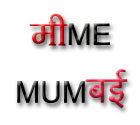The World Bank have praised the efforts to contain the spread of the coronavirus in Mumbai’s Dharavi, one of the world’s largest slums, saying its success stemmed from a combination of customised solutions , community involvement and perseverance.
Image source: TheFederal.com
Dharavi is spread over an area of 2.5 square kilometres and has a population of 650,000. People live in shanties and dilapidated buildings with narrow lanes and open sewers.
The first COVID-19 patient in Dharavi was detected on April 1, nearly three weeks after Mumbai recorded its maiden positive case on March 11.
The Washington-based global lender, in its biennial Poverty and Shared Prosperity report, said that in the space of three months, by July 2020, reported cases in the area had been cut to 20 percent of their peak in May.
Observing that effective approaches have tapped the skills and dedication of community members, the World Bank said that in Mumbai, city officials were able to stem the rapid spread of the coronavirus in Dharavi, one of the city’s largest urban settlements, by mobilising community members and staff from private medical clinics for a strategy based on mass screening for fever and oxygen levels.
To help poor families during the lockdown, foundations, non-governmental organisations and volunteers provided thousands of households with ration kits.
Dharavi’s success stemmed from a combination of customised solutions, community involvement and perseverance, it said.
On Tuesday, a Mumbai civic body official said that the COVID-19 tally in Dharavi slum colony rose to 3,280 with the addition of 22 fresh cases.
Of the total 3,280 cases, 2,795 patients have been recovered from the infection, he said, adding that the slum now has 192 active patients. In July, the World Health Organisation (WHO) also praised the efforts taken to contain the spread of the COVID-19 in Dharavi, underscoring the need for community engagement along with national unity and global solidarity to turn the pandemic around.
Article source: Mid-day.com








